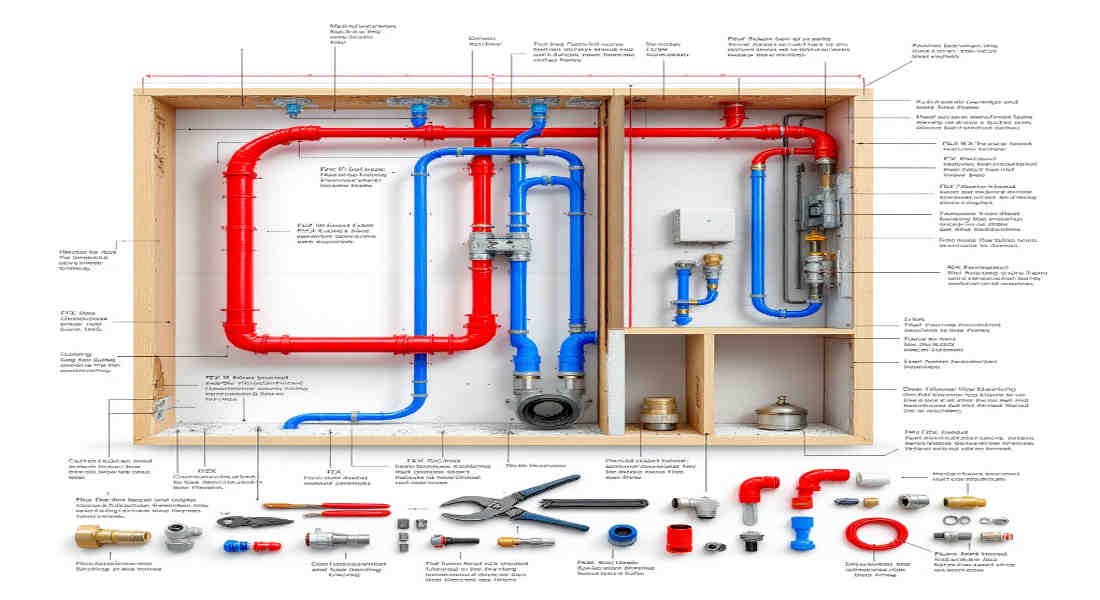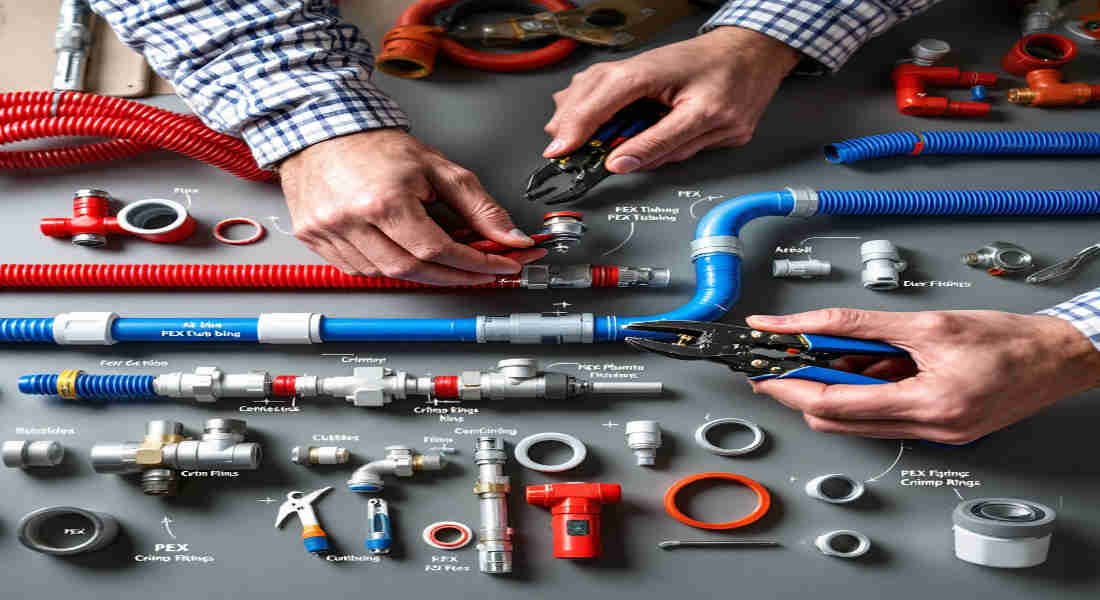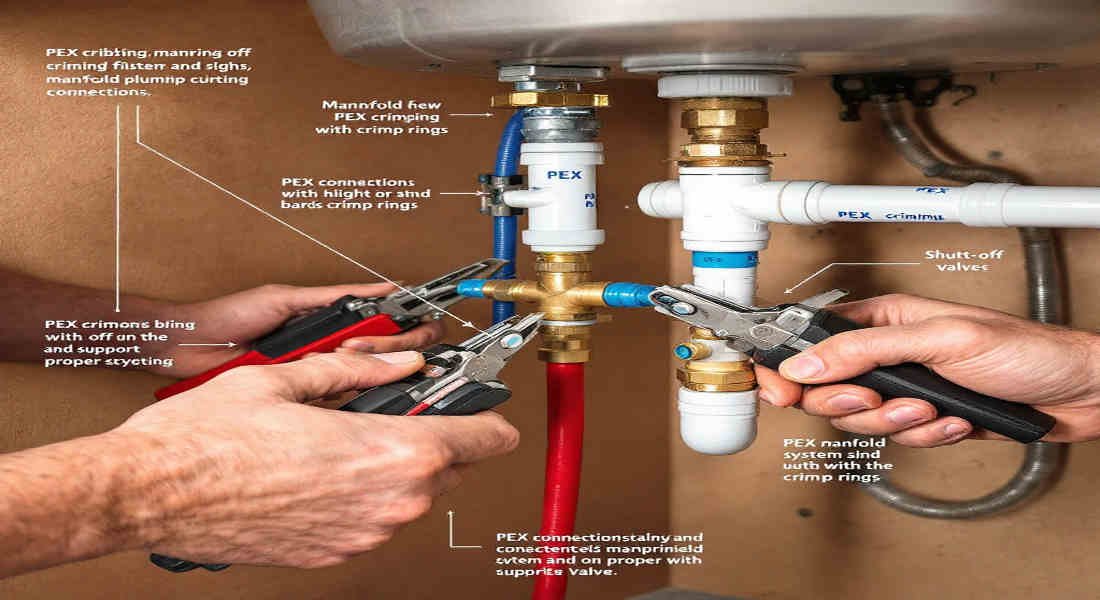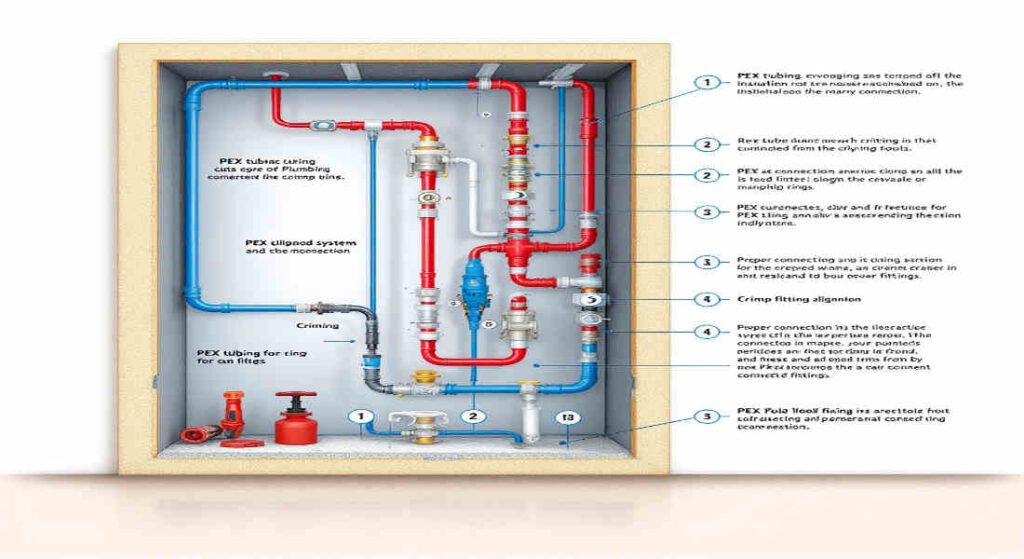Home plumbing has always been an essential yet challenging aspect of maintaining and upgrading residential properties. Over the years, homeowners have faced a multitude of plumbing concerns, from leaky pipes to skyrocketing installation costs. Traditional materials like copper and PVC have long been the go-to options. Still, they come with their own set of limitations—rigid structures, susceptibility to corrosion, and high labour costs being just a few.
Enter PEX Plumbing, a revolutionary solution that has transformed the plumbing industry. PEX, short for cross-linked polyethene, is a modern material designed to simplify and improve home plumbing systems. It offers unmatched flexibility, durability, and cost efficiency, making it a top choice for both professionals and DIY enthusiasts.
What is PEX Plumbing?
Definition of PEX
PEX, or cross-linked polyethene, is a type of plastic tubing that has been chemically treated to enhance its strength and flexibility. Unlike rigid pipes made of copper or PVC, PEX tubing can bend around corners and obstacles without the need for excessive fittings or connectors.
A Brief History of PEX
While PEX might seem like a modern invention, it has been around for decades. Initially developed in the 1960s, PEX gained popularity in Europe before making its way to the United States in the 1980s. Over time, it has become a staple in residential and commercial plumbing projects due to its reliability and ease of installation.
Comparison with Traditional Plumbing Materials
Let’s take a closer look at how PEX stacks up against common plumbing materials:
FeaturePEX PlumbingCopper PlumbingPVC Plumbing
Flexibility: Highly flexible, fewer fittings. Rigid requires elbows/fittings, mainly for drain lines.
Cost More affordable Expensive Affordable
Installation Ease Quick and simple Labor-intensive Moderate
Durability Corrosion-resistant, freeze-proof Prone to corrosion Brittle in cold weather
Noise Level Quiet operation Noisy (water hammer) Moderate
Energy Efficiency Retains heat well Loses heat quickly Moderate
Why PEX is Gaining Popularity
Homeowners and professionals alike are turning to PEX because it combines the best features of traditional materials without their drawbacks. Its affordability, flexibility, and longevity make it an ideal choice for modern plumbing systems, whether for new construction or retrofitting older homes.
Key Benefits of Using PEX Plumbing
Flexibility and Ease of Installation
One of the standout features of PEX is its flexibility. Unlike copper or PVC, which require numerous fittings to navigate around walls and corners, PEX can bend effortlessly. This reduces the need for additional connectors, minimizing potential leak points.
Durability and Freeze Resistance
PEX is built to last. It resists common issues like corrosion, rust, and scale buildup, making it ideal for long-term use. Additionally, its unique ability to expand during freezing conditions prevents it from bursting—a common problem with traditional pipes. This freeze resistance is especially valuable in colder climates.
Manufacturers often provide warranties of up to 25 years for PEX systems, giving homeowners peace of mind about their investment.
Cost-Effectiveness
When it comes to cost, PEX is a clear winner. It is significantly cheaper than copper, both in terms of material costs and installation expenses. PEX also retains heat better than metal pipes, resulting in energy savings for hot water lines. Over time, homeowners can also save on maintenance and repair costs, as PEX is less prone to leaks and damage.
Noise Reduction and Improved Water Pressure
Traditional metal pipes are notorious for causing noise, particularly the loud banging sound known as water hammer. PEX, on the other hand, absorbs sound effectively, ensuring quieter operation. Moreover, its smooth interior allows for better water flow, resulting in improved water pressure throughout your home.
You may also read (do you tip exterior house).
Environmental and Safety Advantages
PEX is NSF-certified for water purity and is entirely lead-free, ensuring safe drinking water for your household. It is also environmentally friendly, as its production and disposal have a lower environmental impact compared to traditional materials.
How to Use PEX Home Plumbing: A Step-by-Step Guide
Planning Your PEX Plumbing System
Start by assessing your home’s plumbing needs. Create a layout of your plumbing system, noting areas that require connections, bends, or additional fittings. Choose the appropriate PEX tubing size and type based on your water flow requirements.
Don’t forget to check local plumbing codes—these regulations may dictate the type of PEX you can use and how it should be installed.
Tools and Materials Needed
To get started, you’ll need the following tools and materials:
- Essential Tools: PEX crimpers, clamps, cutters, and expansion tools
- Fittings: Crimp, clamp, and push-fit connectors
- Safety Gear: Gloves, goggles, and protective clothing
Installation Process
Here’s a step-by-step overview of the installation process:
- Prepare the Site: Shut off the water supply and remove any existing pipes if necessary.
- Cut and Bend PEX Tubing: Use a PEX cutter for clean cuts and bend the tubing around corners as needed.
- Connect the Tubing: Use your chosen fitting method (crimp, clamp, or push-fit) to secure connections.
- Test the System: Turn the water back on and check for leaks or pressure issues.
Tips for Retrofitting with PEX
If you’re upgrading an older home, PEX can easily integrate with your existing plumbing system. Transition fittings are used to connect PEX to copper or PVC pipes. To avoid common pitfalls, ensure that all connections are secure and compatible with other materials.
You may also read (hvac and house plumbing).

